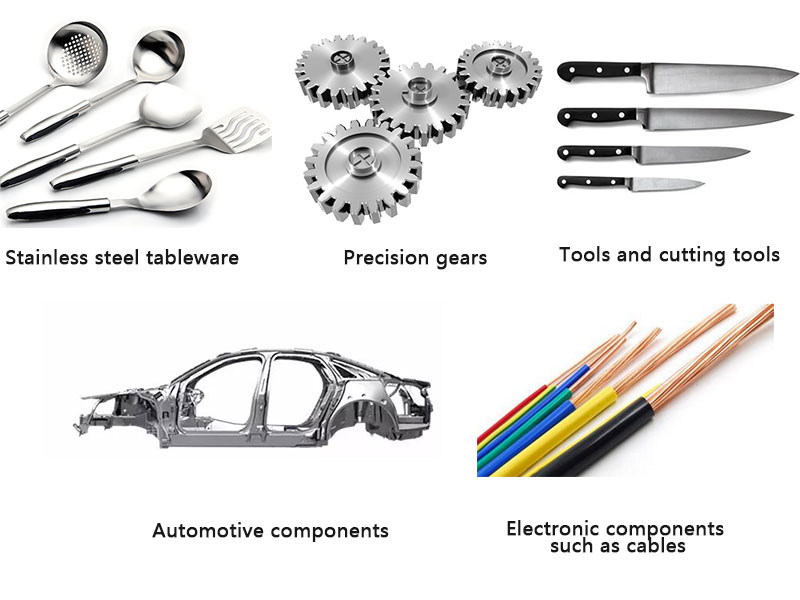Bright annealing, also known as radiant annealing, is typically performed in enclosed spaces. After heating and annealing, let the temperature slowly drop below 500 degrees in a closed space, and then proceed with natural cooling. This method can avoid decarburization and improve the glossiness of the metal. Compared with ordinary annealing, heating and cooling during the ordinary annealing process can lead to oxidation and decarburization, which increases metal loss and cost. Therefore, many manufacturers prefer to use bright annealing.
1.Bright annealing steps:
① Heating: Heat the metal workpiece above its critical annealing temperature. This temperature is usually the reaction temperature of the metal, which can cause changes in the crystal structure of the metal.
② Insulation: Keep the metal workpiece at high temperature for a period of time to ensure even distribution of heat and uniform crystal redistribution of the internal structure of the metal.
③ Cooling: Quickly cool the metal workpiece from a high temperature state. Multiple methods can be used in this step, including air cooling, water quenching, oil quenching, etc.
④ Cleaning and treatment: After bright annealing, the metal surface usually produces oxides or other pollutants. Therefore, cleaning and surface treatment are usually required to improve surface quality.
2.Bright annealing application areas:
① Stainless steel products: Bright annealing is commonly used in the production of stainless steel products, such as kitchenware, tableware, pipes, etc., to improve their corrosion resistance and mechanical properties.
② Precision parts manufacturing: In the manufacturing of precision parts, bright annealing can improve the dimensional stability and surface smoothness of the parts.
③ Automotive components: used to improve the strength and wear resistance of automotive components, and to extend their service life.
④ Electronic components: In electronic manufacturing, bright annealing can be used to improve the conductivity and conductivity of metal wires, contacts, etc.
⑤ Tools and cutting tools: Bright annealing helps improve the hardness and wear resistance of tools and cutting tools, extending their service life.

The application fields of bright annealing
3.The advantages and characteristics of bright annealing:
① Surface quality: After bright annealing, the surface smoothness of the metal is improved, which helps to improve the appearance quality and surface corrosion resistance.
② Mechanical properties: Bright annealing can improve the hardness, strength, and toughness of metals, and enhance their overall mechanical properties.
③ Dimensional stability: Through uniform crystal redistribution and bright annealing, it helps to improve the dimensional stability of metal components.
④ Widely applicable: Bright annealing is suitable for various metals, including steel, copper, aluminum, etc., and has a wide range of application areas.
4.Precautions during bright annealing process:
① Process parameters: The process parameters for bright annealing, such as temperature, holding time, and cooling rate, need to be precisely controlled according to specific metal and workpiece requirements.
② Surface treatment: After bright annealing, surface treatment is required to remove possible oxides or pollutants and improve surface quality.
5. Summary:
Bright annealing is an important heat treatment process that optimizes metal properties by controlling the heating and cooling processes of metals, and is widely used in multiple fields of manufacturing. Click to consult online customer service for more information on bright annealing!